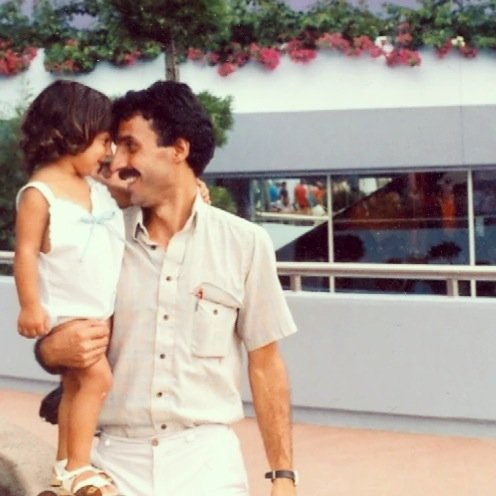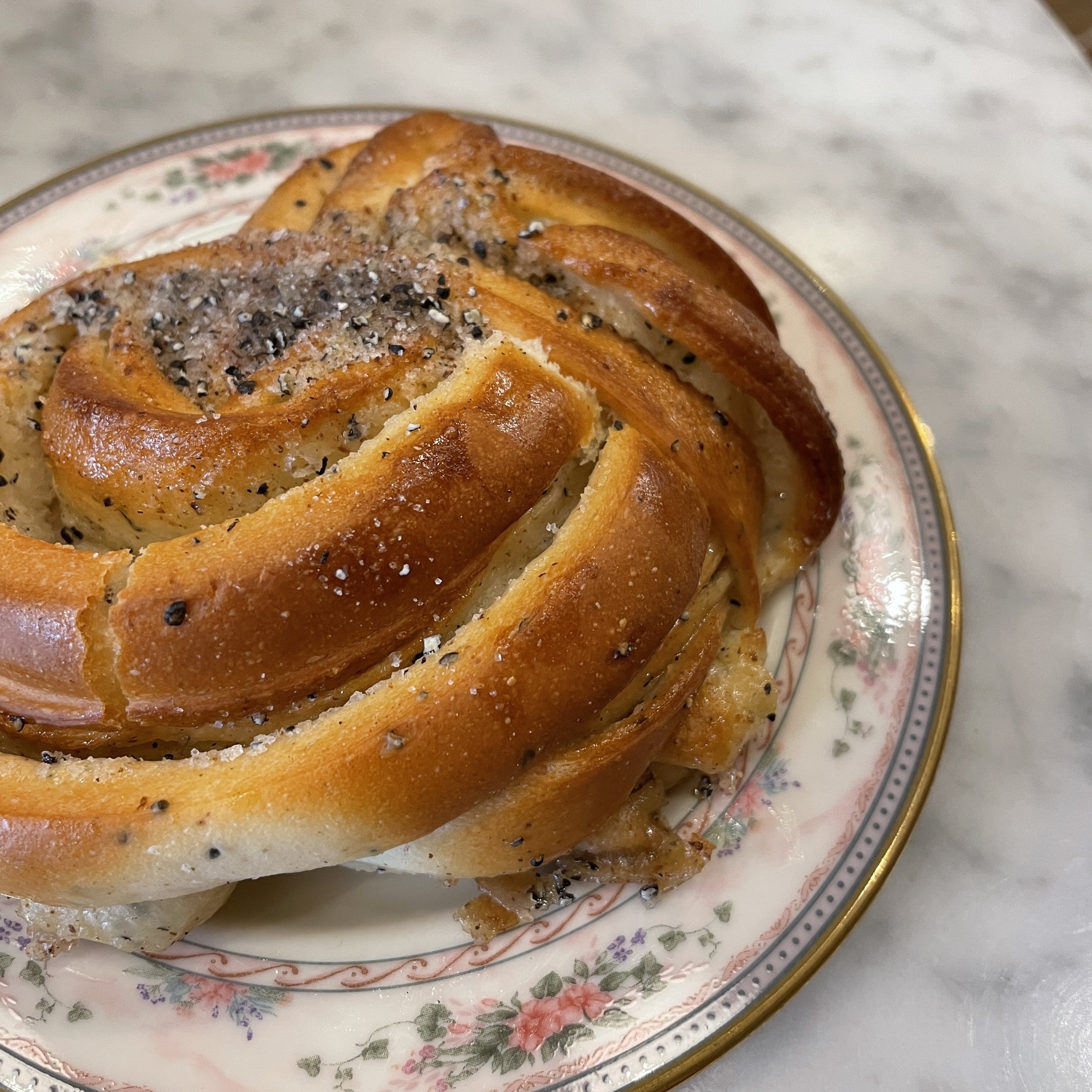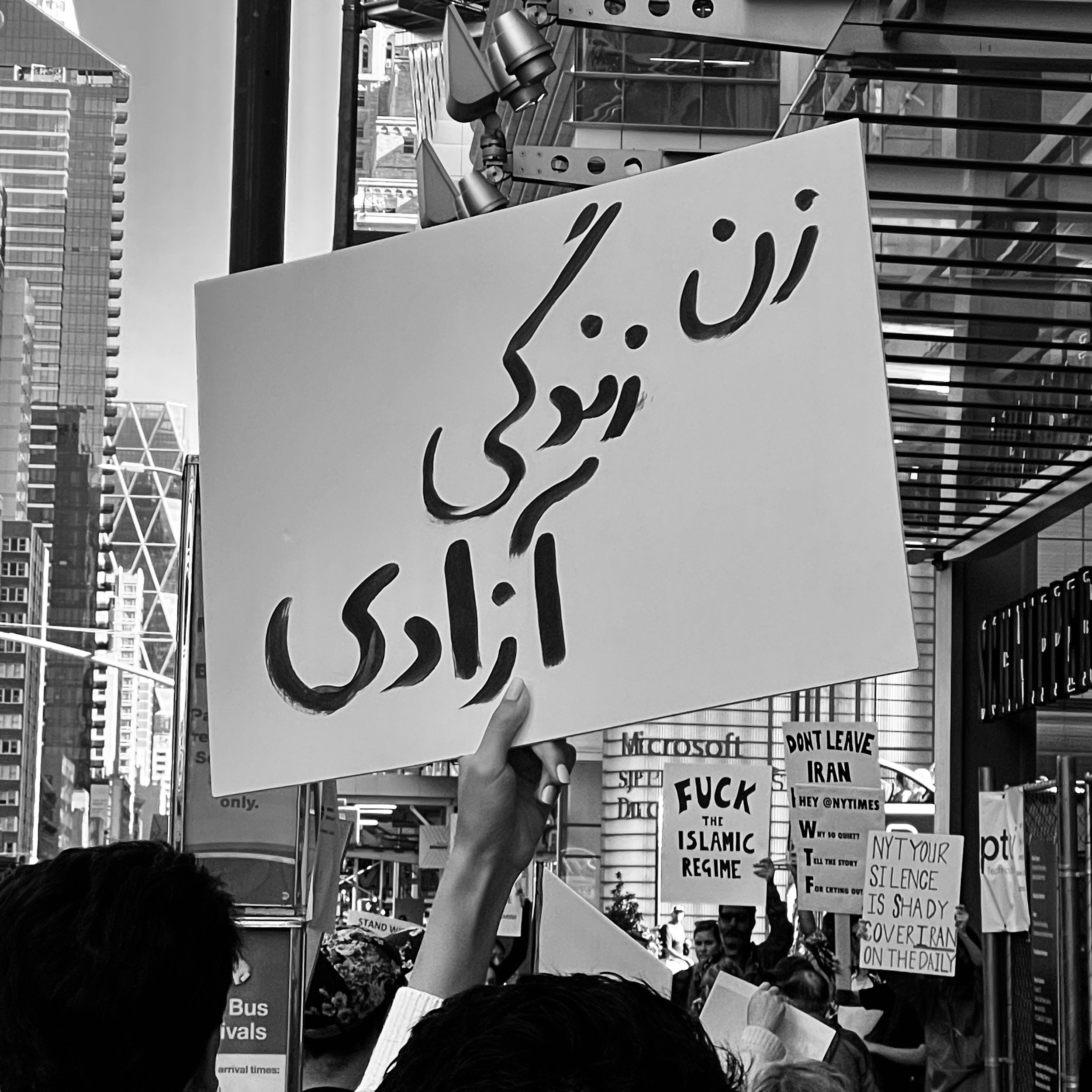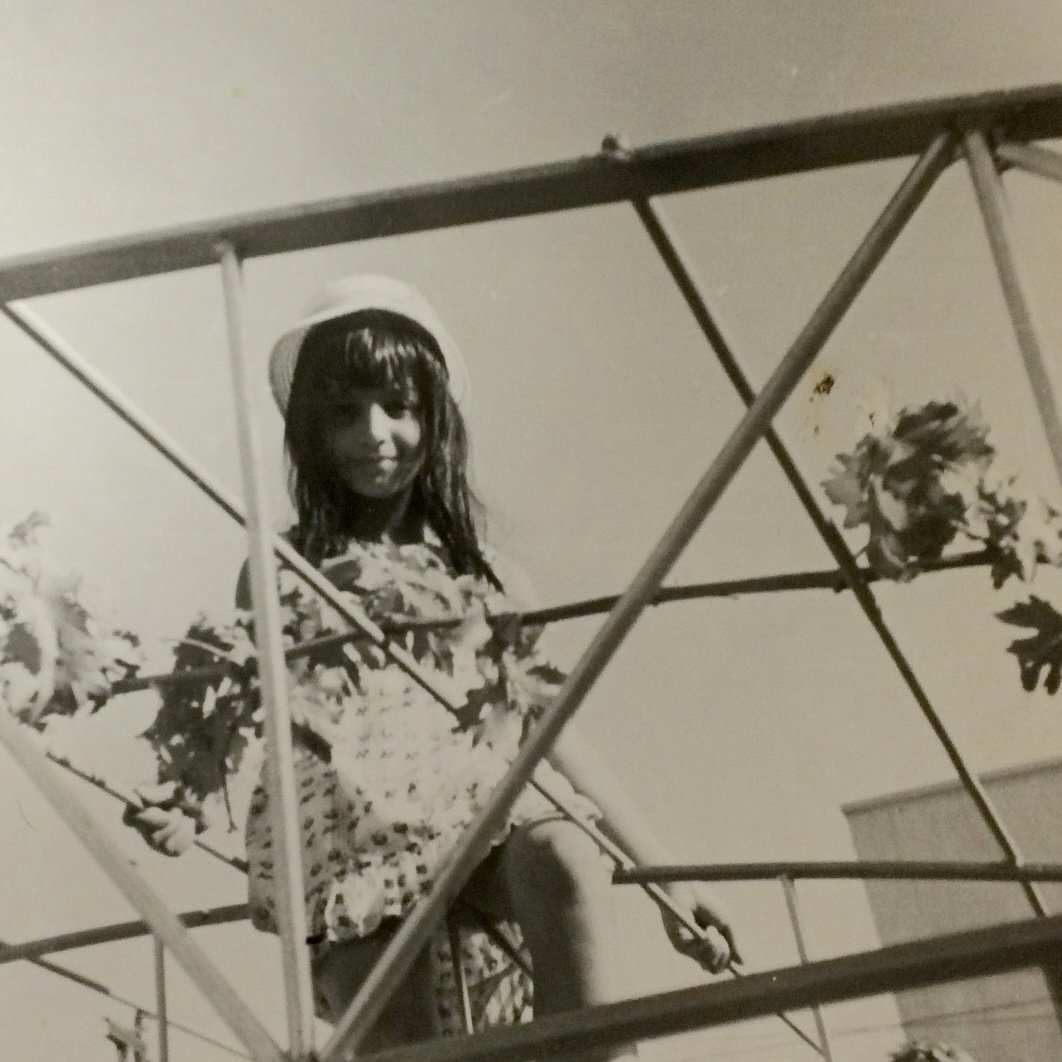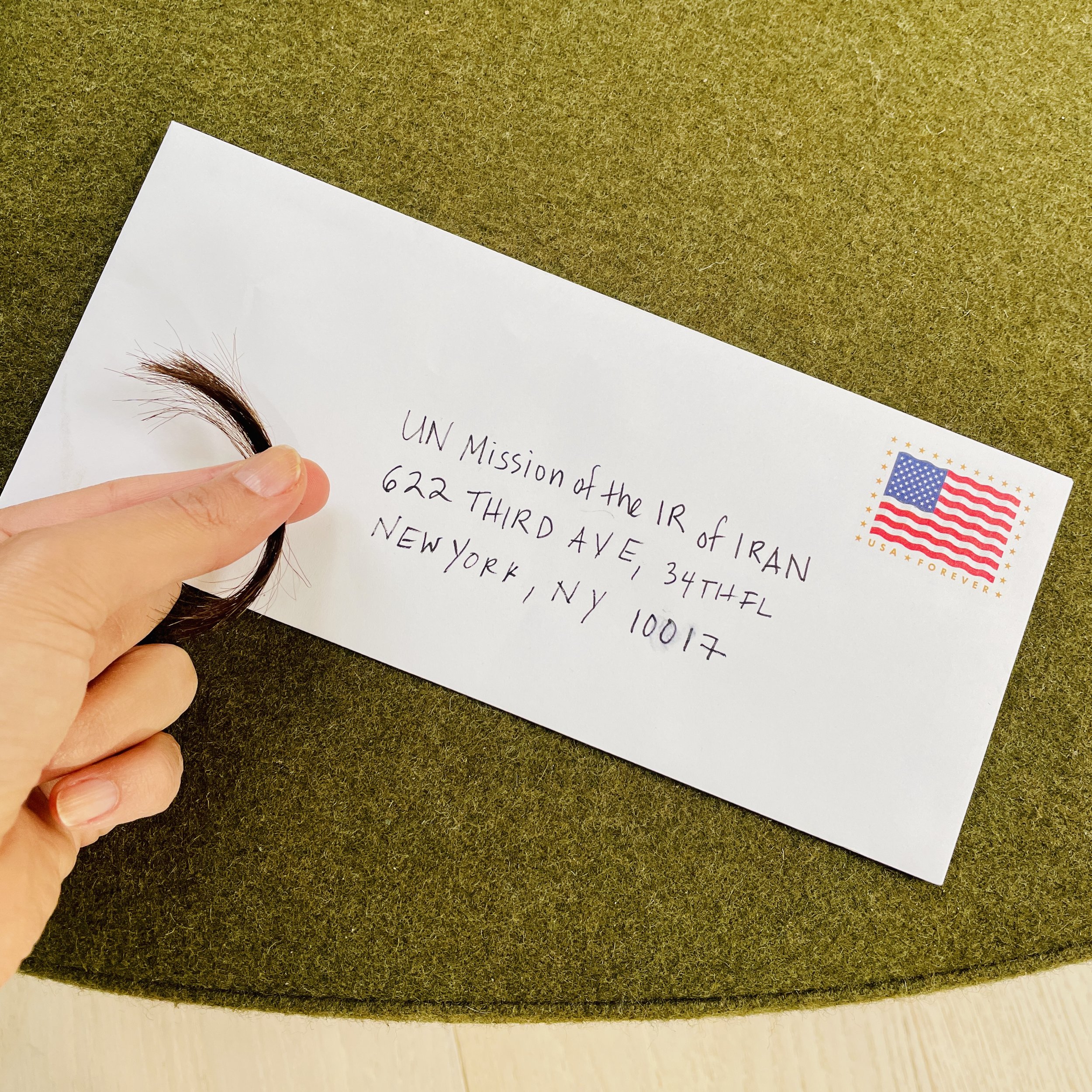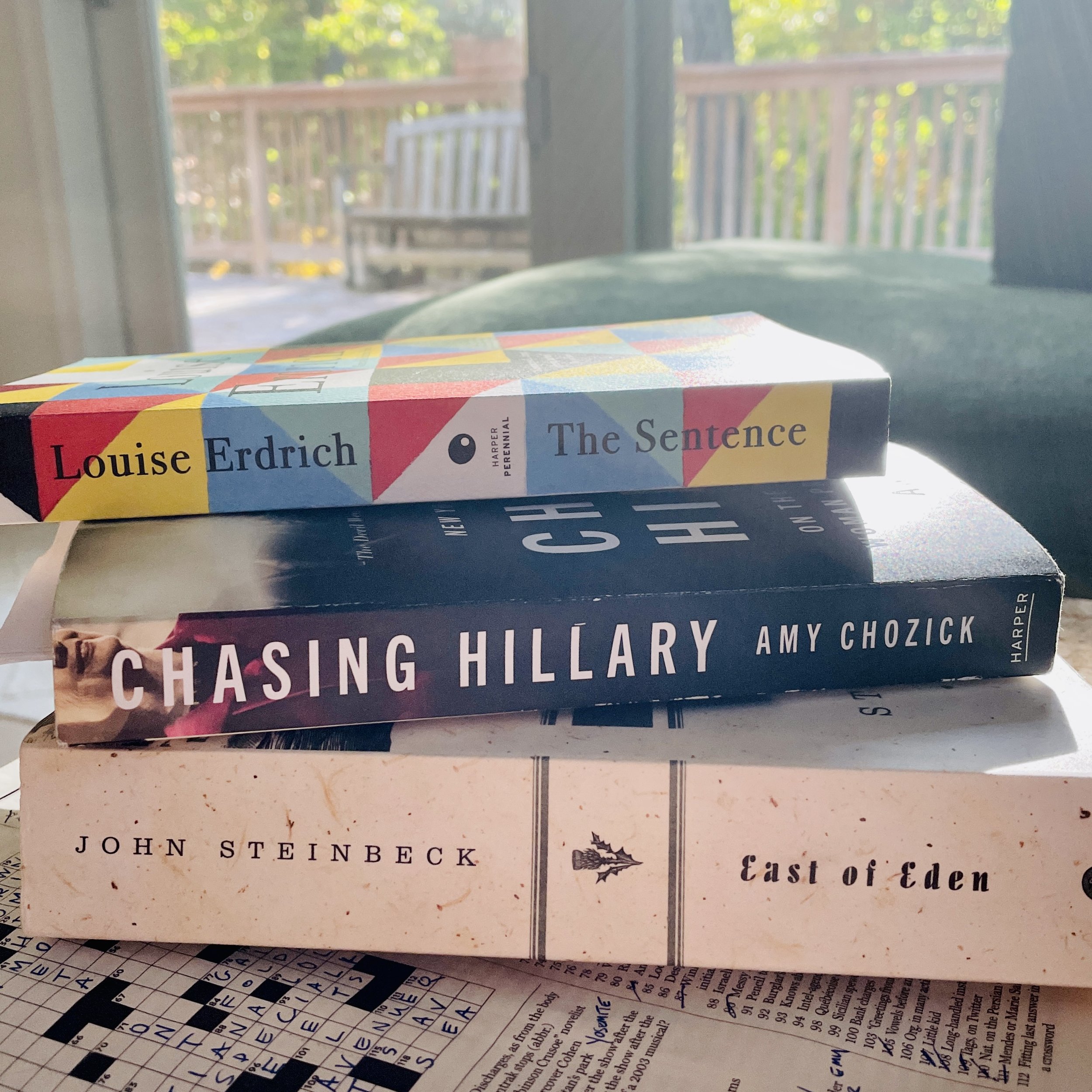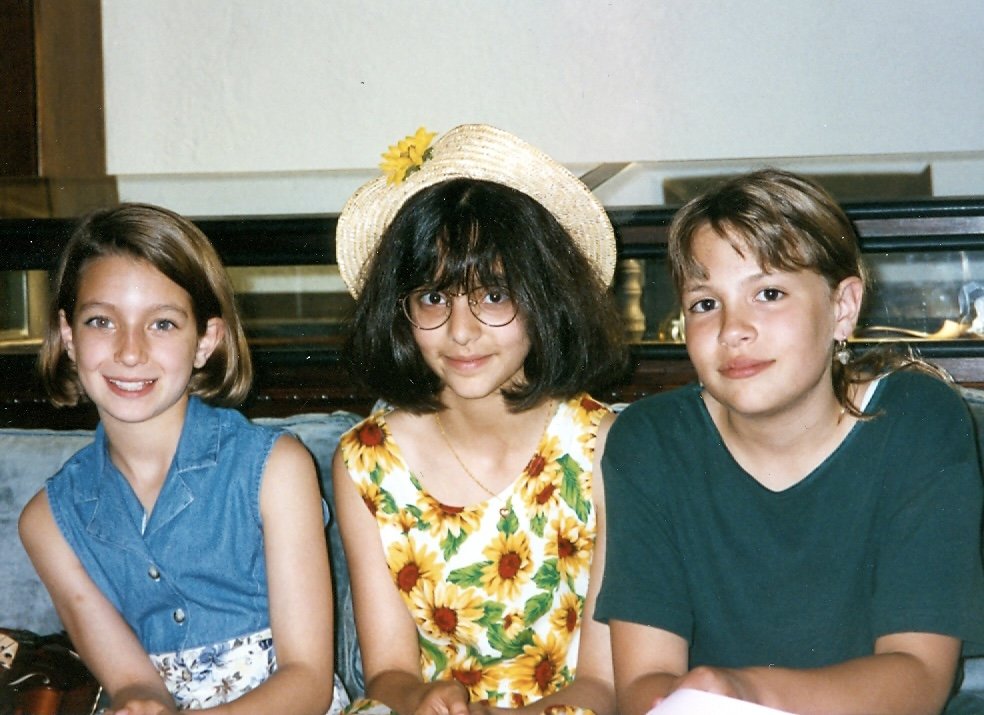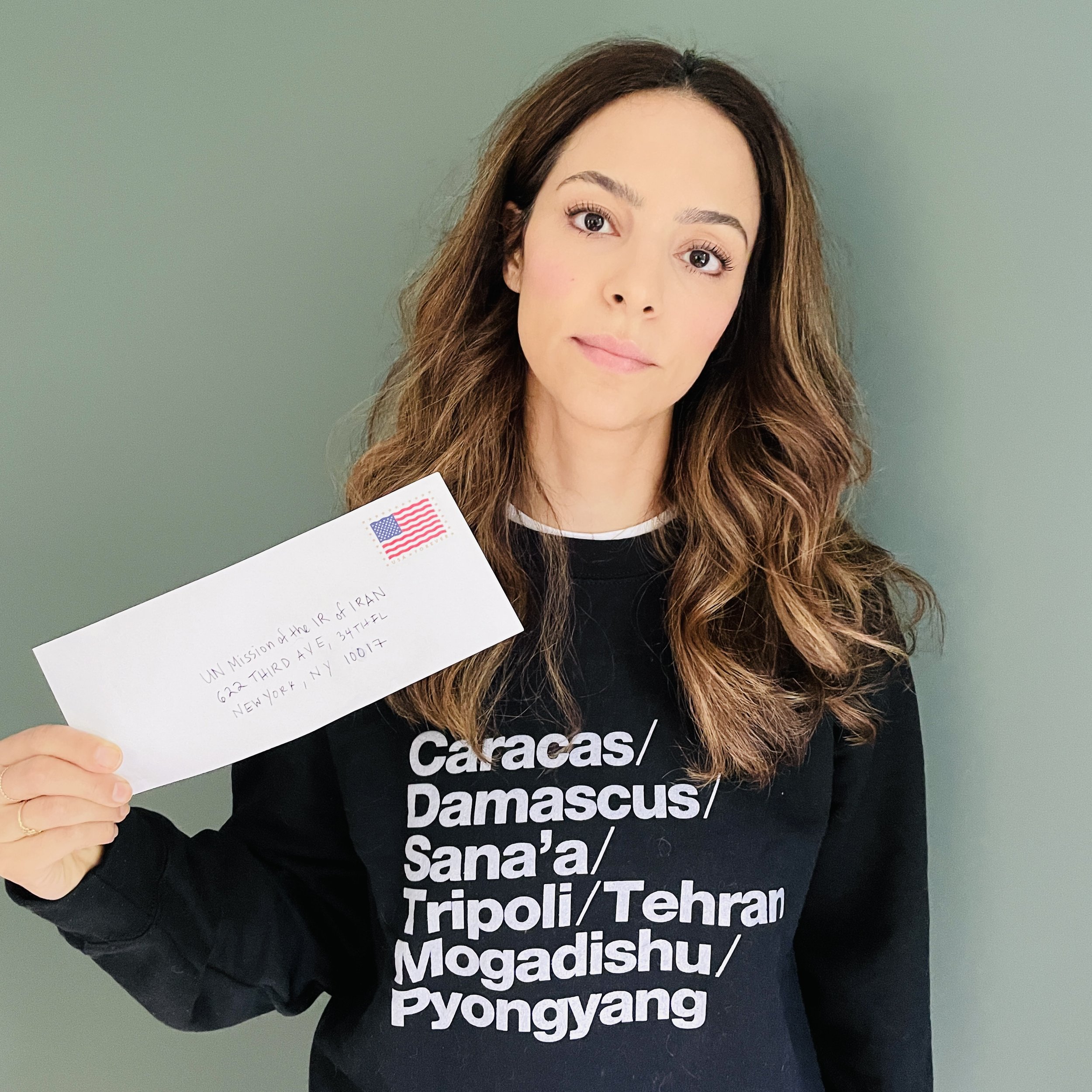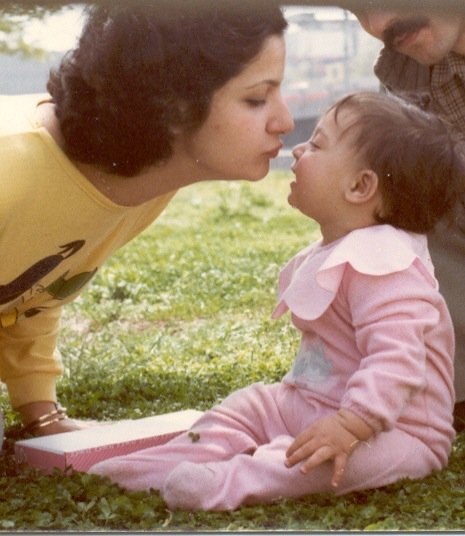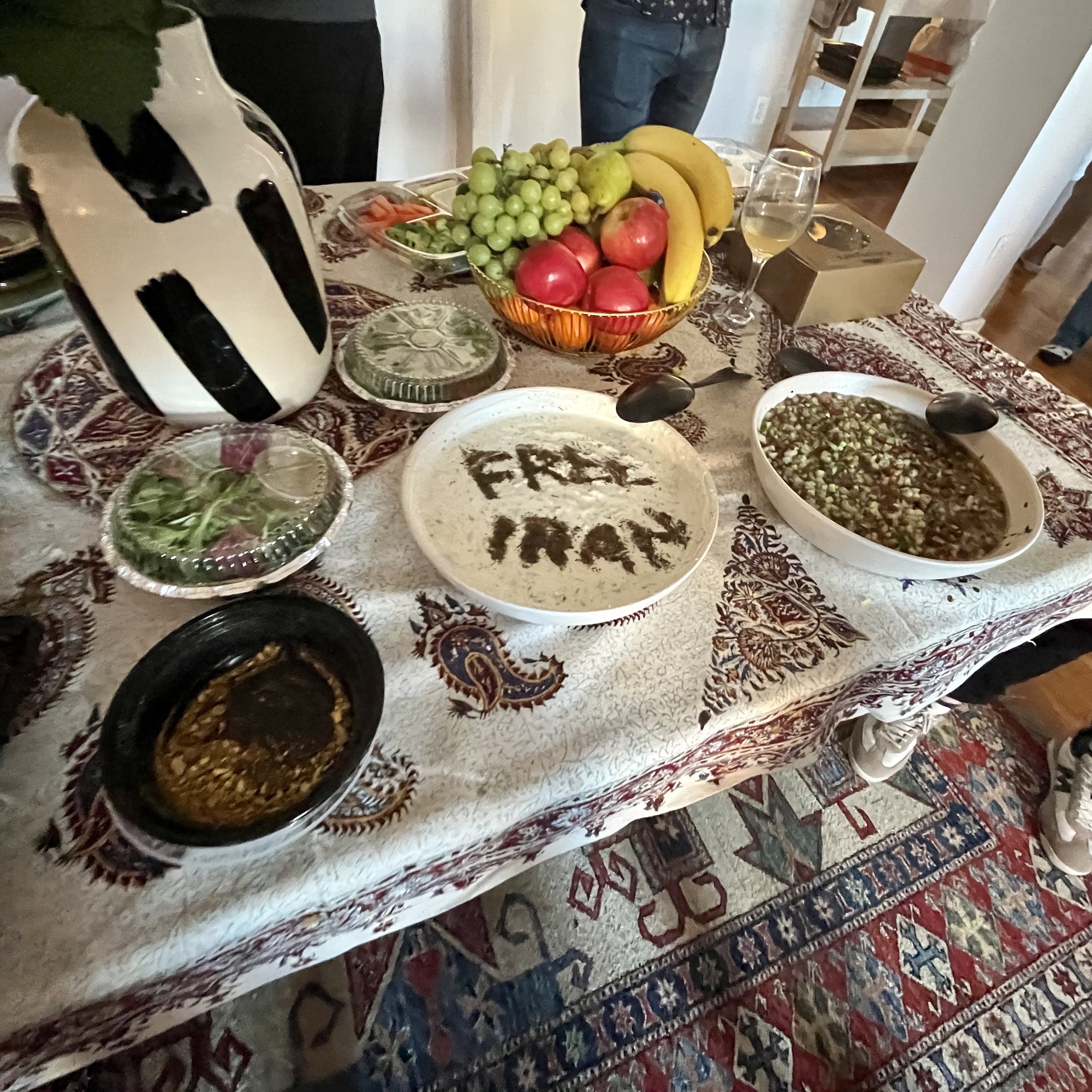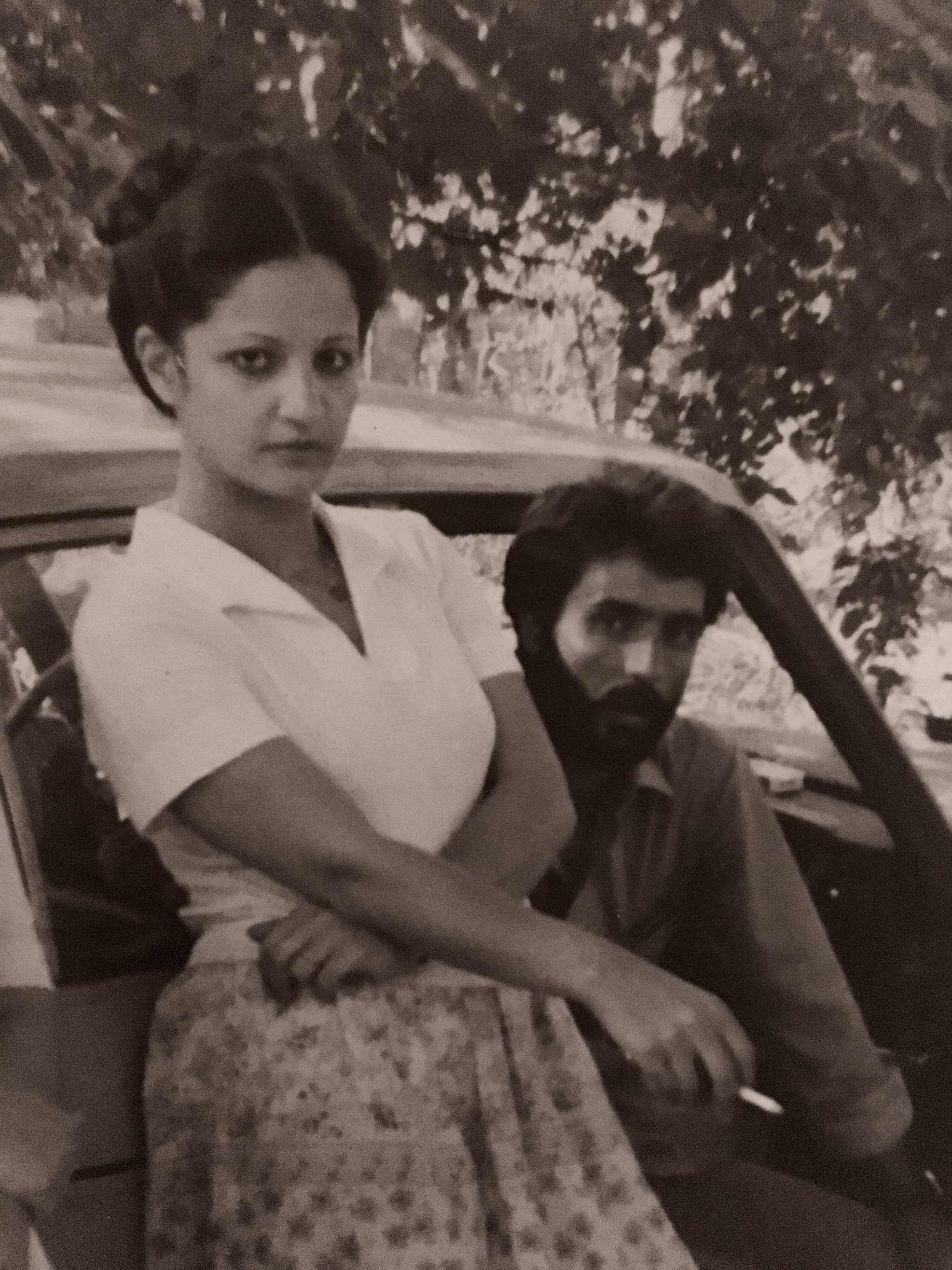Camera Roll with Tala Ashe
In a special edition of our Camera Roll series — where we glimpse into the current moment through an in-depth look at our interviewee’s phones — we speak to Iranian-American actor Tala Ashe about the political situation in her native country of Iran and how she captures the things that matter to her right now.
When actor Tala Ashe looks at her phone lately, it’s to stay up to date and communicate with family, friends, and her followers about the situation in the country she left behind as a baby. The Iranian-American is known from popular TV shows such as Smash or CW’s Legends of Tomorrow as well as New York Theater, and was most recently nominated for a Drama Desk Award for her performance in English by Iranian-American writer Sanaz Toossi. As the women of Iran spearhead a brave and bold challenge to the Islamic Republic, the likes of which have not been seen since the regime’s takeover in 1979, we speak to Tala about her personal journey to the US, what it feels like to witness “the world’s first feminist revolution” from afar, her tips on where to stay informed, and how to show up in solidarity.
What kind of phone do you have and how many images are on it?
An iPhone 12Pro (I had to look that up), with 26,186 photos (yikes — that’s a lot right?).
Where are you right now? And how does it feel to watch the situation in Iran unfold from there?
I’m based in New York. It’s terrifying, awe-inspiring, and all-encompassing.
Tell us a little bit about your personal background and your family’s journey from Iran to the US.
I was born in Iran and emigrated as a baby to the US. In the picture of my mom by the Hydrangea bush, she’s pregnant with me. This was about a year before we left Iran. I grew up in Ohio which resulted in blonde envy, over-plucked brows, and a bifurcated sense of self (see picture of hairy me and the blonde girls) — one that I’m still navigating, particularly as I try to support the movement in Iran from the relative comfort and safety of my American home.
I will forever be in awe of my bad-ass parents who uprooted themselves and their newborn during a war, to come to a country where they had to speak a new language, learn a new culture, and build their lives from scratch. Their sacrifices have been immense, and like much of the Iranian diaspora, the last 43+ years have been incredibly traumatic. I dream about a day where they might see a Free Iran.
Is there anything you wish people understood better about what’s going on in Iran right now?
Mostly, I wish people understood the gravity of what is happening in Iran and how we got to this moment. This uprising is a direct result of decades of intervention and meddling by the West (specifically the UK and US — google “Mossadegh,” or watch the documentary COUP 53). Historically there have been myriad bad actors in the form of governments, organizations, and groups with self-serving motives when it comes to Iran, and it is always regular Iranians who suffer as a result (this moment is no exception). Because the US is intrinsically complicit in the events that led to this brutal regime, it is even more so our responsibility, as Americans, to pay attention to and support this movement. A movement that is fundamentally about human rights and bodily autonomy (the ramifications of which will ripple out across the world) and feels particularly pertinent as women’s reproductive rights in America are being systematically dismantled.
How is the current moment different from the 2009 Green Movement?
The Green Movement was born out of a sham election and inspired fervent demands for change. What’s happening now builds upon that but has evolved. The demand now is not one of reform, but complete rejection of the current regime. To me, change feels inevitable this time – particularly because the movement is being led by women and incredibly, teenage girls(!), whose bravery in this moment is impossible to overstate. I saw it called “the world’s first feminist revolution” and that rings true. These girls are my north star and I’m doing everything in my power to center them.
How can people who aren’t in Iran get involved?
Movements require multi-pronged, sustained approaches and it’s important to remember that not everyone is comfortable with every form of activism. But, as with all movements for change, if you find the avenue where you excel and can be most useful, you are ultimately contributing to the larger goal. Amplifying news on social media, signing petitions, contacting your representatives imploring them to isolate the regime, attending protests, checking in on your Iranian friends- all of these are ways to get involved and support.
how are you keeping up with what's going in Iran and what do you recommend for others to be informed?
News outlets in the West have been fairly slow (or non-existent and inaccurate) when it comes to reporting about Iran. There are exceptions (like these articles: NYMag, The Paris Review, TIME), but I’m still counting on Twitter and IG to get the latest news. In spite of the Iranian government’s continuing efforts to shut down the internet, the resourceful and determined people of Iran are still managing to get news and videos out via VPNs and proxy-servers (speaking of which, we can all be running Snowflake to help circumvent internet censorship).
Social media engagement makes a huge difference because of this censorship. Frequent and widespread posting (especially from non-Iranians) will help keep this movement alive. It’s the least we can do as Iranians in Iran put their bodies, safety, and lives on the line (to date, there are reports of over 12,000 arrested and 233 killed — the actual number is undoubtedly higher).
can you Tell us about one of the images on your camera roll and share what it means to you?
It’s an image of an envelope with a lock of hair next to it (see below). A few friends and I started an initiative called @youvegotmailiran where we encourage people to send locks of hair to the UN Mission of the Islamic Republic of Iran in New York as an act of peaceful civil disobedience against the IR. We were inspired by some Italians doing a similar action with the Iranian embassy in Italy. The US and Iran have no diplomatic ties, but the one US-based address for IR officials is at the UN Mission where, ironically, IR officials hold a seat on the UN Commission on the Status of Women (the top women’s rights forum).
This action makes a statement of both solidarity and support for the girls, women, and allied protesters of Iran. This movement isn’t about hair, but what hair has come to represent: bodily autonomy and human rights. Fundamentally, this is one small action people can take to get involved and keep the spotlight on the women-led movement. It’s been really inspiring to see people around the world run with the idea (as far as New Zealand!), challenge their friends and co-workers to join them, and send this message of solidarity. I relish the thought of IR officials receiving split-ends from across the world.
how do capture and remember moments of your life?
I cherish visual memories. Ever since high school, I’ve been that annoying person who insists on photographing friends and family with the vigor of a documentarian. I really enjoy sharing photos that people don’t remember being taken — I’m like a human TBT. This obviously has shifted now that cameras are ubiquitous. I’ve recently been taking photos with disposable cameras (see: millennial angst). There’s nothing like the tactile feeling of physical photos and albums. In general, my rule is that if everyone has their phones out taking photos/videos, I try to put mine down and be present in whatever that moment is.
When did you get your first phone, and what do you remember about it?
I was an early adopter and got the first iPhone — I remember my primary impetus being the ability to take photos on (!) your (!) phone (!). I recently found it whilst unpacking and was tickled at how retro it felt. Funny to look at it and have a sense of “simpler times…”
What apps on your phone do you use most?
Lately because of Iran, I’m constantly on IG and Twitter. Fitbit: I’m obsessed with my sleep and steps. Marco Polo: a delightful way to send video messages to friends. And Podcasts: does that count as an app?
What’s in your podcast queue? Any creators or channels you’ve subscribed to?
Shameless plug: I produce a podcast called That’s What She Said, hosted by my dear and brilliant friend, Therese Barbato. She’s interviewed nearly 100 women over 6 seasons, and in particular our latest season features women who have loved deeply, and lost their partners. I’m biased, but I find the conversations to be a beautiful and profound meditation on mortality and how love transforms after loss. I also listen to The Daily… daily. I’ve loved and listened to Fresh Air & WTF with Marc Maron for years, and more recently Wind of Change, 70 over 70, Dead Eyes, and Maintenance Phase.
What are you reading?
I’m reading White Teeth and Chasing Hilary (research for work). The Sentence and East of Eden are on deck. I don’t know how I would survive this life without books. I’ve been part of a book club since 2016 (we call ourselves “Bookah,” born out of the intention to read books and smoke hookah… we have yet to hookah, but the name stuck). My god — the books, people, and conversations have been a salve during these 6 years.
Do you have any friends or family on the ground in Iran? Are you able to stay in touch with them and what is their experience right now?
Communication is very touch and go — I have a lot of concerns about their safety, so I’m wary about saying too much. Suffice it to say, they’re engaged, fighting and hoping the world is listening and supporting their struggle.
last thing you googled on your phone?
“Best rug size for queen bed” — can you tell I just moved?
What are you watching right now?
Le Bureau, Reboot, and The Last Movie Stars.
Can you describe your lock screen and what made you pick it?
The back of an Iranian girl with her hair in a long braid down her back, her hijab down around her neck, peace-sign held high, as she defiantly faces a row of regime soldiers.
images provided by tala ashe, interview by claire brodka

